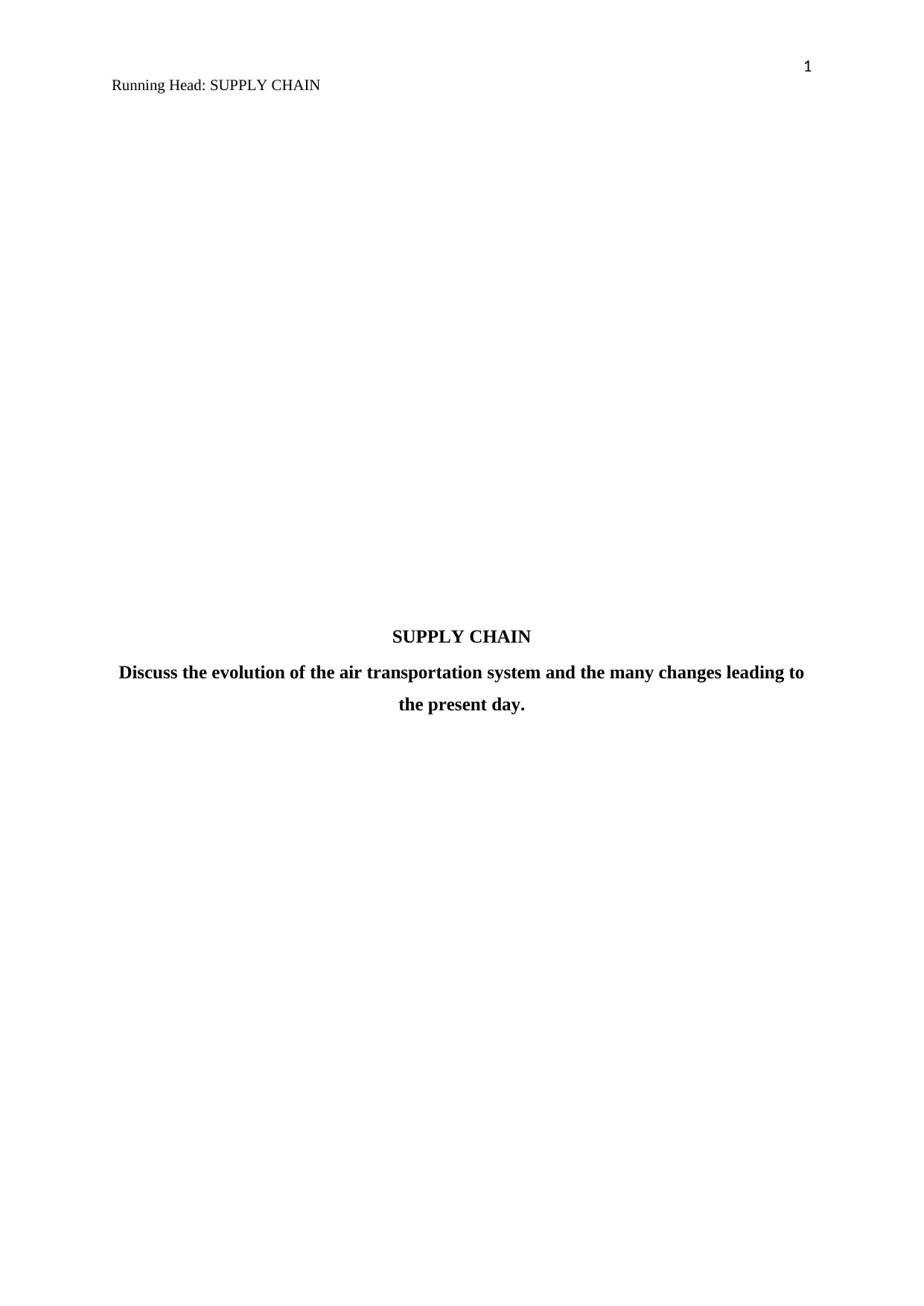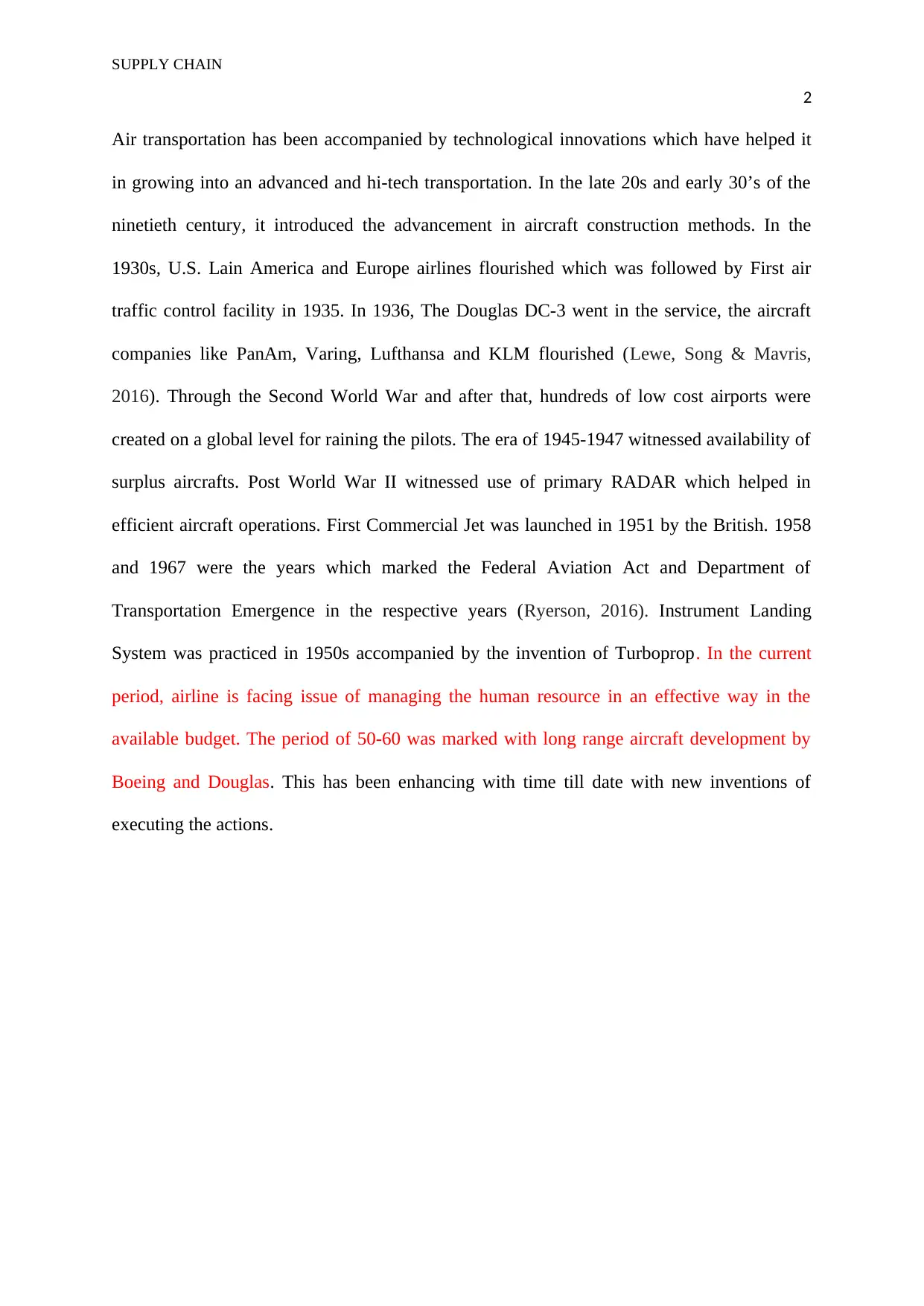BUS 300: Analysis of the Air Transportation System Evolution
VerifiedAdded on 2022/09/24
|3
|361
|40
Discussion Board Post
AI Summary
This discussion post examines the evolution of the air transportation system, tracing its development from the early 20th century to the present day. It highlights key milestones such as the advancements in aircraft construction in the 1920s and 1930s, the rise of airlines like PanAm and Lufthansa, and the impact of World War II on the industry, including the creation of numerous airports and the availability of surplus aircraft. The post also discusses the introduction of RADAR, the advent of commercial jets, and the establishment of regulatory bodies like the Federal Aviation Act. It addresses contemporary challenges such as human resource management within budgetary constraints and the ongoing development of long-range aircraft, emphasizing the continuous innovation within the sector. References from academic sources provide further support for the arguments presented.
1 out of 3




![[object Object]](/_next/static/media/star-bottom.7253800d.svg)